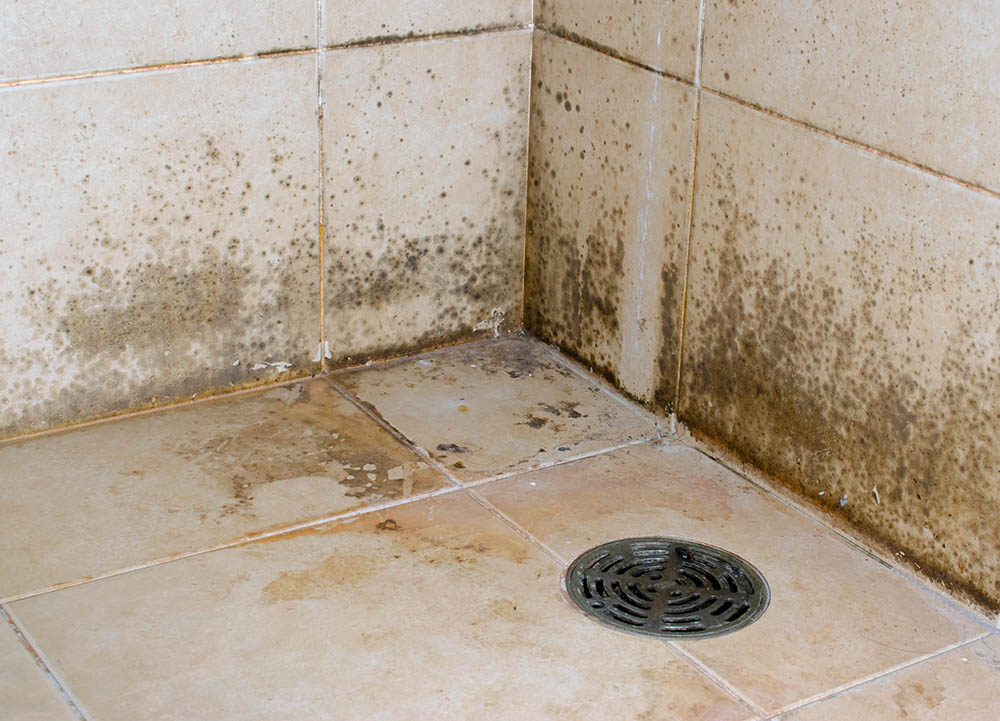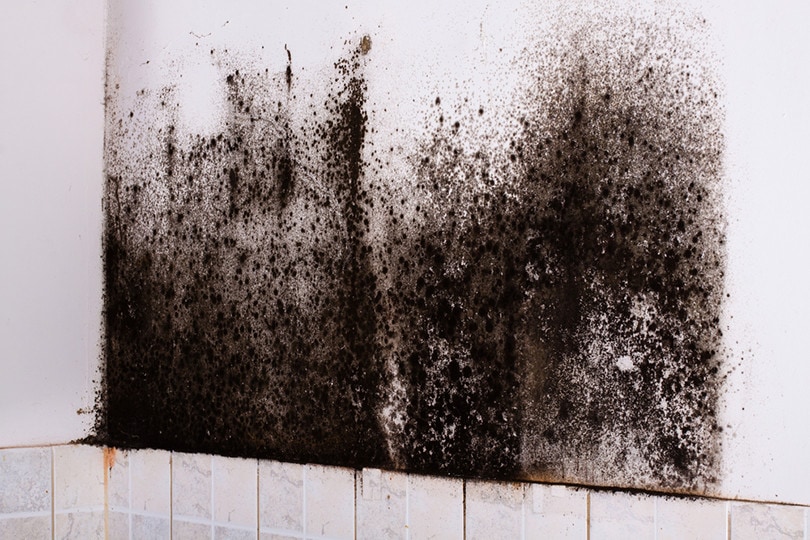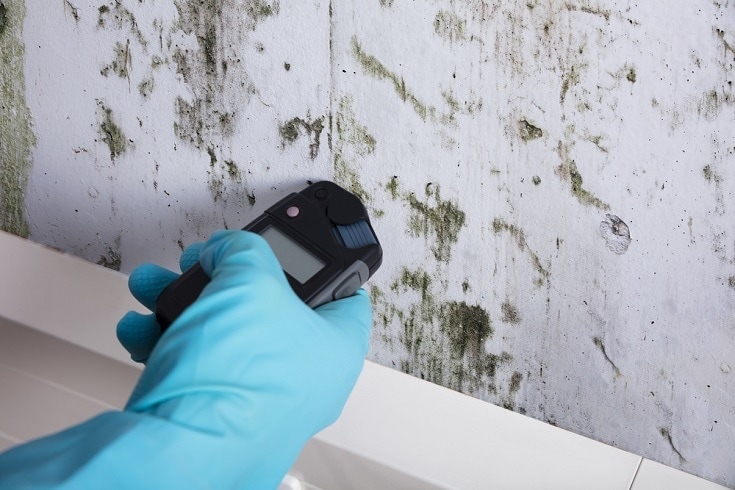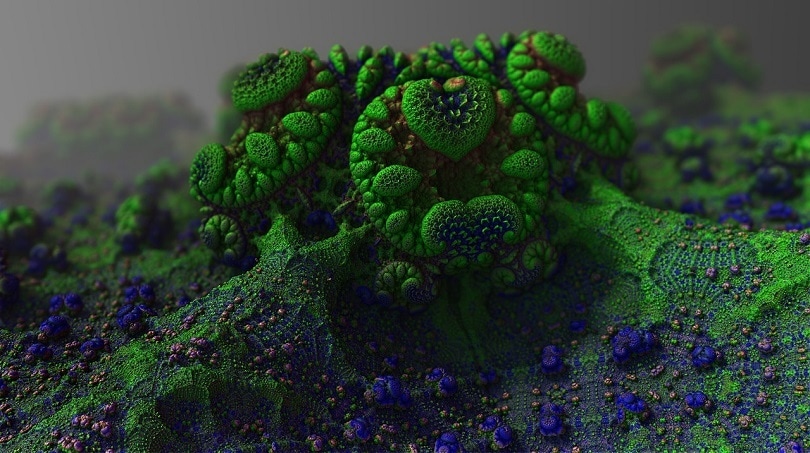Mold vs. Mildew: Overview, Differences & Health Problems
-
Pete Ortiz
- Last updated:

Mold and mildew are two things that are confused with one another. It’s easy to do because they both grow in similar areas. As fungi, they need the same things to live, and in many cases, they actually affect our bodies in similar ways.
But what is the difference? This article gives a quick overview of each of these types of fungus so you can differentiate between them. We’ve also included a few tips to help you get rid of them in your home with some DIY solutions.
Keep in mind that in some cases, the wisest move is to bring in a professional for remediation—especially in the case of severe mold infestation. We’ll go over what to look for to make that call, though.
 Overview of Mold
Overview of Mold
Over the years, the fear of mold has intensified. The fear is not entirely unfounded because some types of mold can be hazardous to our health. But the main issue with mold is that it doesn’t simply live on surfaces.
It will actually burrow behind walls or above the ceiling where you can’t see it. Then the microscopic spores will circulate through your home as air moves. These spores are linked to several health problems—mostly respiratory—and some people are more susceptible to mold symptoms than others.
Even if it starts on a surface somewhere, it’ll penetrate the surface if it’s not killed and cleaned right away. Once it penetrates, it becomes extremely difficult to get rid of and may need professional remediation.

It’s possible to find mold anywhere that is warm and consistently moist. Obviously, some of the most common places to find mold are bathrooms, kitchens, or flooded basements.
However, there are some more surprising places where you can find mold too:
- Furniture or mattresses: mold grows easily on fabric and hard surfaces alike
- Chimneys, especially if they don’t get used often
- Attics
- Food
Mold typically looks pretty distinct and has a distinct smell.
- Musty smell
- Black or green color (sometimes red)
- Looks fuzzy in advanced growth
- Spreads and penetrates quickly
- Causes structural damage and leaves large stains
- Causes health problems and reduces air quality

It’s possible for mold to cause various health problems. However, certain people are more prone to complications from it. For example, if someone has an allergic reaction to mold and has asthma, it may cause an asthma attack.
Other than respiratory issues, some symptoms are possible but less common.
- Irritation of skin, eyes, nose, or throat
- Headaches
- Lung infections and shortness of breath
Overview of Mildew
Mildew is not less common than mold, but it’s a lot less of a problem. Typically, it’s quite easy to clean. For example, you’ll notice it loves to grow around the tub’s edge where the shower surround meets the tub. The silicone will get that slimy gray or brown film on it.
Usually, a kitchen and bathroom cleaner is formulated to make short work of mildew. And it doesn’t penetrate the same way mold does, so there are no worries about it spreading and damaging behind the shower surround.
To really experience any severe symptoms from mildew, it would have to be allowed to grow and spread for a long time. In most cases, it never gets this bad because it’s almost always visible and doesn’t look nice, so it gets cleaned quickly.
Common Places to Find Mildew
Typically mildew is only found on hard surfaces but prefers much of the same environment as mold. So, you can expect to find mold in the bathroom, kitchen, or on window sills. Some plants are susceptible to mildew as well.
Even though they are often confused, mildew and mold do have pretty distinct differences in how they look and act.
- White or gray color (sometimes a light brown)
- Distinct pungent odor in larger amounts
- Spreads fast in damp environments but doesn’t penetrate the solid surface
- Once cleaned, it doesn’t usually leave any lasting destruction
- If left unchecked can cause some minor symptoms and irritation
For the most part, mildew is far less dangerous to our health when compared to mold. However, if left uncleaned, it will cause some uncomfortable symptoms:
- Nasal congestion and headaches
- Mild respiratory issues—more severe in those who are sensitive
Preventing Mold and Mildew
If you own a home, the chances of dealing with mold or mildew eventually are almost 100%.
- Adequate ventilation in the bathroom or when cooking
- Keep humidity as low as possible
- Clean the areas these fungi grow regularly
- Leave outdoor furniture outside
- Check plants regularly for mold or mildew
- Ensure there are no exterior issues like a leaking roof or broken siding that will allow mold growth
Getting Rid of Mold and Mildew
When it comes to getting rid of either of these fungi, it’s a similar approach. Typically, mold requires more harsh chemicals to actually kill it and clean it.

Mold
If the mold is in a small area and doesn’t seem to be coming from beneath the surface. The most effective way to kill it is with bleach—either concentrated or diluted with a bit of water.
The biggest thing to remember is to spray gently and evenly. If it’s disturbed and not wet, the spores may become airborne. You will breathe them in, or they may fall somewhere else and begin growing again.
Mildew
Most bathroom or kitchen household cleaners are formulated to clean mold effectively. Even a vinegar solution will work. So, mildew cleanup is a lot easier and safer than mold.

When to Call a Professional
As a general rule, cleaning mildew rarely requires a professional. Mildew is less dangerous and much easier to eradicate. On the other hand, mold often requires a mold remediation expert.
If you’re just cleaning some surface mold while changing a tub or doing some minor renovations, that’s one thing. But mold often begins behind the scenes, and when you finally see it, it has already spread.
For example, if you open a wall and find a massive amount of black mold, it’s time to stop what you’re doing and call in a professional. If it’s not eradicated properly, it could result in serious health complications. The mold could become airborne and spread to a new area, and the problem will repeat itself.
 Final Thoughts
Final Thoughts
Mold and mildew are simply a part of owning a home. That’s why regular cleaning of their breeding grounds is so important. If you can prevent the growth of mold and mildew, you’ll dodge a lot of potential future problems.
One last thing to think about. If you or your family are experiencing symptoms of mold or mildew for seemingly no reason, there may be a hidden culprit. A remediation expert has tools that can test for the presence of these things and help you find the problem.
Featured Image Credit: (L) D Townsend, Shutterstock | (R) Peeradontax, Shutterstock
Contents

 Overview of Mold
Overview of Mold